A trip to Amritsar is like striking travel gold. The largest urban area in Punjab, Amritsar is one of India’s most deeply spiritual cities. Tens of thousands of devout Sikhs and cultural tourists alike make a pilgrimage to Amritsar every day for one main reason: A visit to the famous Golden Temple. There’s nothing quite like strolling around the glistening structure and sitting down for a communal meal from the temple’s massive, volunteer-run kitchen with dozens of other visitors.
But as you dig deeper into this soulful, frenetic city, you’ll have tons of other fascinating experiences that will make you fall in love with Amritsar. You can adventure to the border of Pakistan and watch the daily Wagah Border Ceremony, tuck into incredible Punjabi food, wander around the funhouse-like Mandir Mata Lal Devi, and tour the Summer Palace. Plus, Amritsar is an excellent spot to shop for Indian textiles.
Ready to experience all the magic Amritsar has to offer? Plan your trip to this beloved city with our list of the best places to visit in Amritsar.
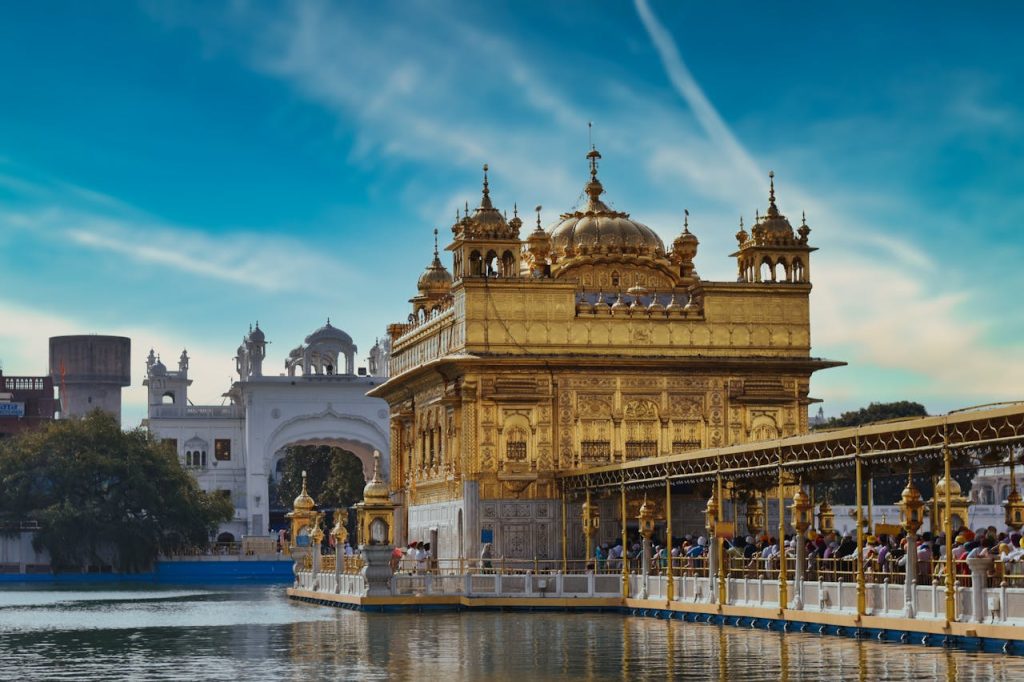
The Golden Temple
The definitive top attraction in Amritsar is the Golden Temple, a two-story structure covered in real gold and surrounded by a 5.1-meter-deep manmade lake. But not merely a tourist site, this legendary religious shrine is one of the most sacred places in the world for Sikhs, many of whom make a pilgrimage to the temple at least once in their lifetimes.
To enter the Gurdwara complex, where the Golden Temple resides, you’ll need to cover your hair, remove your shoes, and step through a small stream of running water to cleanse your feet. Then, you’ll walk clockwise on the inlaid marble path that flanks the pool, as worshippers chant and bathe in the water.
Making your way to the glistening inner sanctum of the temple, where priests chant songs from the Guru Granth Sahib holy text, is just one of many things to do at the Golden Temple. This attraction is home to the world’s largest community kitchen, welcoming anyone to sit on the floor and savor a free vegetarian meal with other visitors. It’s mesmerizing to see hordes of volunteers chopping onions, peeling garlic, and cooking huge vats of lentils and roti for up to 100,000 diners every day.
You can also see a collection of holy Sikh weapons inside the Akal Takhat (a seat of power inside the Golden Temple complex) and learn more about Sikhism in the Golden Temple Interpretation Centre, tucked beneath the clock-tower entrance of the temple.
The Golden Temple is an inspiring place, and one that you can get personally involved with, if you wish. You can volunteer at the Golden Temple Kitchen, and bond with locals as you prepare lunch. You can also sleep at the Golden Temple in one of its pilgrim hostels for up to three nights. Sleeping here gives you easy access to the Golden Temple at sunrise—the best time of day to see the structure shine.
Address: Golden Temple Road, Atta Mandi, Katra Ahluwalia, Amritsar
Wagah Border Ceremony
A 31-kilometer drive west from the city center of Amritsar will take you to the border of Pakistan, where a curious border-closing ceremony takes place at sunset every afternoon. Full of pomp and circumstance, the Beating Retreat Ceremony involves an ostentatious display of goose-stepping guards from the Indian Border Security Force and the Pakistan Rangers saluting each other, lowering and folding their flags, and closing the gates at the border.
The experience gives tourists (typically seated in a special VIP section, once they flash their foreign passport) the chance to see the stark differences between Pakistan and India. On the Pakistan side, you’ll see men and women sitting separately in stadium-style seating, and the vibe is much more subdued.
On the Indian side, however, it’s a patriotic party. Bollywood music blasts from speakers as women dance in the street, while those in the stands wave Indian flags.
While just 45-minutes long, the entire ceremony gives you enough memories for hours of storytelling back at home.
Address: Wagah Border, National Highway 1 PB, Amritsar
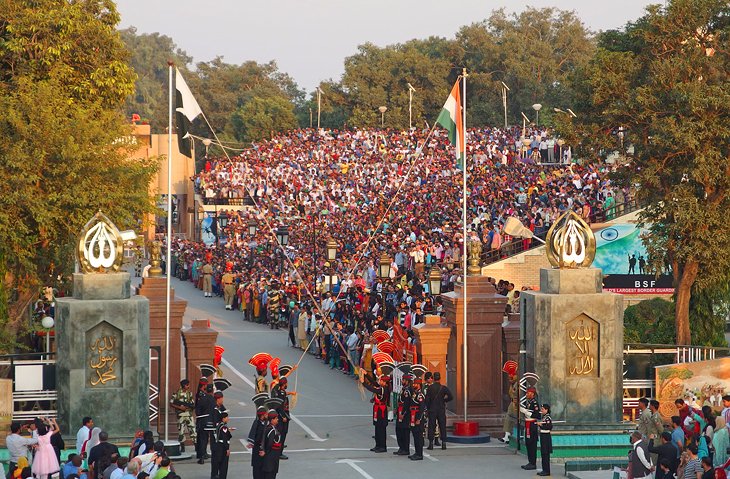
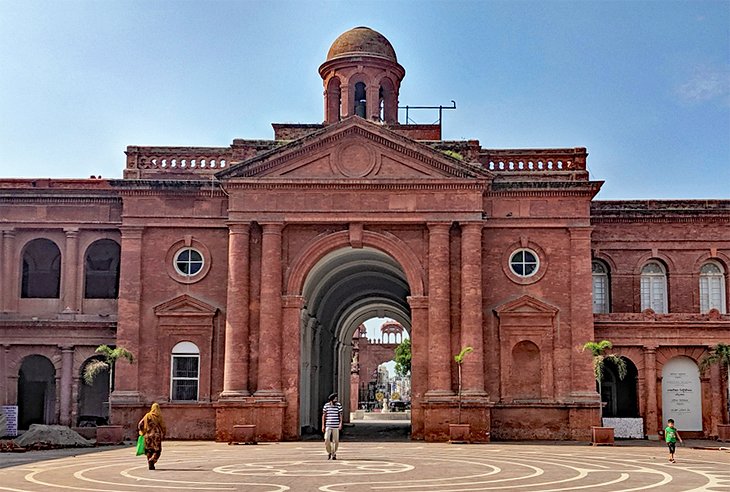
Partition Museum
The year 1947 was a big one for India. Not only was it the year that India gained its independence from Great Britain, it was also the year it split into the two different entities of India and Pakistan—an event known as the Partition of India.
Tourists in Amritsar can learn about this defining moment in history at the Partition Museum, the only institution in the world devoted entirely to Partition. It features a haunting collection of newspaper clippings, antique photographs, and oral histories with people who experienced the violence leading up to the separation of the two countries, and the resettling of refugees after the event. The experience will give you a deeper understanding of the source of rivalry between India and Pakistan.
On your way out of the museum, jot down a message on a green leaf and hang it on the Tree of Hope.
Address: Hall Road, Town Hall, Katra Ahluwalia, Amritsar
Punjabi Restaurants
Punjabi cuisine has become known around the world for its spicy curries, pillowy breads, and tandoori-fired meats. If you’re looking to indulge in this tradition of colorful feasts, there’s no better place to do it than in Amritsar.
Bharawan Da Dhaba, located kitty-corner to the Partition Museum, whips up downright decadent Amritsari kulcha (mildly leavened flatbread) stuffed with Indian cheese or potatoes and served with spiced chickpeas.
Tear into the Punjabi breakfast staple of chole puri (puffy bread with chickpea curry) at Kanha Sweets, just a block away from the BBK DAV College for Women.
Dig into tandoori chicken from a decades-old recipe at the Beera Chicken House, across from the Bhandari Hospital.
And if you’ve got a sweet tooth, treat yourself to piping-hot jalebi (deep-fried spirals of maida flour batter dunked in sugar syrup) at Gurdas Ram Jalebi Wala, a hole-in-the-wall sweets shop just 400 meters away from the Golden Temple.
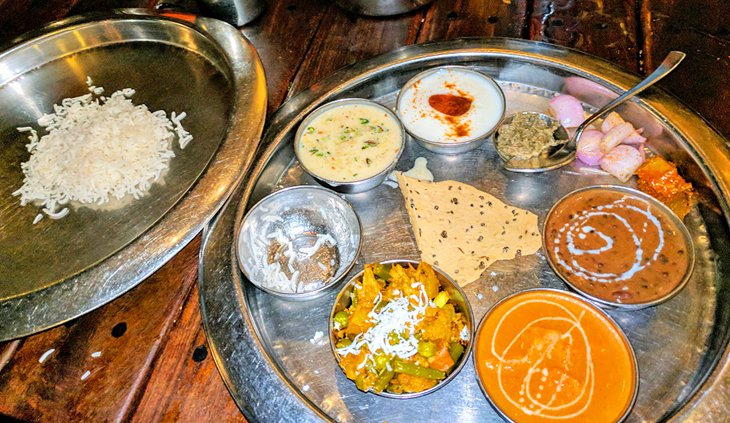
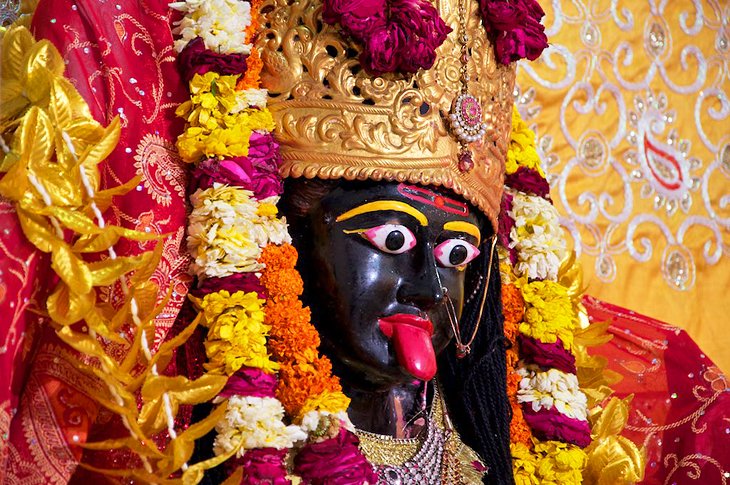
Mandir Mata Lal Devi
The Mandir Mata Lal Devi is as bizarre as the Golden Temple is elegant. Legend has it that this Hindu temple, dedicated to the female saint Lal Devi, can boost the fertility of women who visit. But to non-devotees, the labyrinthine attraction resembles a funhouse.
You’ll wander down dark, narrow passages that lead to garish rooms covered in mirrored mosaics, walk through the open mouths of funhouse-style animal carvings, see giant wooden cobras, and crawl through a watery cave to the shrine of Lal Devi.
The entire experience will give you a new perspective on Hinduism and the ways devotees practice their spirituality. It’ll also prove to be one of the most fun things to do in Amritsar.
Address: 61/62, Model Town, Rani Ka Bagh, Mohindra Colony, Amritsar
Jallianwala Bagh
Tucked behind the Golden Temple, tourists will find another important site in Amritsar: Jallianwala Bagh. The public garden memorializes the estimated 1,500 people who were killed or injured when British soldiers were ordered to fire on peaceful protesters who were demanding the release of imprisoned leaders of the Indian Independence Movement in 1919. You can still see bullet holes in the walls that hundreds of victims hid behind in attempt to dodge the gunfire.
The memorial site’s Martyrs’ Gallery displays the portraits of important figures of Indian independence. You can also check out a humbling exhibition on the victims and see an eternal flame.
Address: Golden Temple Road, Jallan Wala Bagh, Katra Ahluwalia, Amritsar
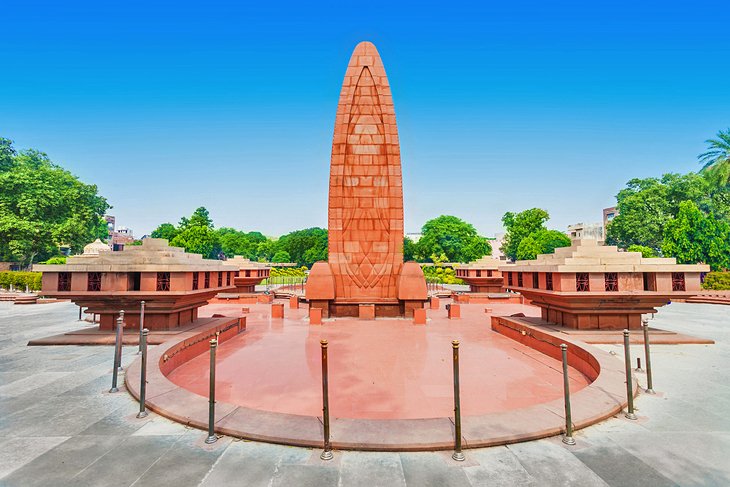
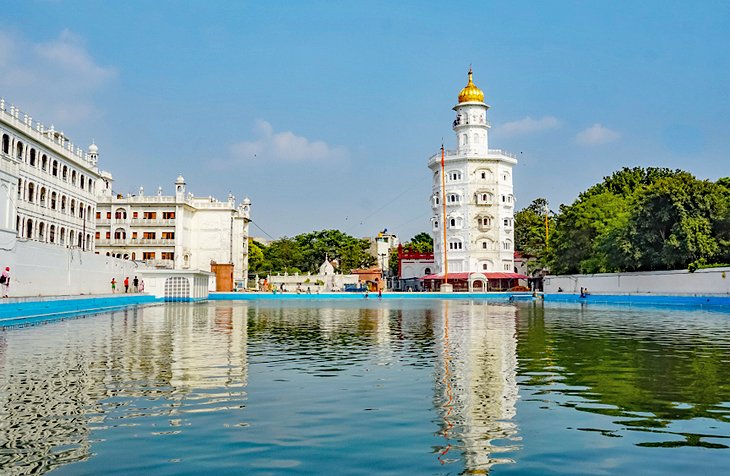
Baba Atal Tower
Often overshadowed by the neighboring Golden Temple, Baba Atal Tower is a worthwhile attraction in Amritsar in its own right. The structure is an architectural marvel, with nine octagonal stories stacked 40 meters high, making it one of the tallest structures in Amritsar.
Baba Atal Tower is dedicated to Atal Rai, the son of a Sikh guru. Legend has it that Atal Rai performed the miracle of bringing someone back from the dead, and then gave up his life in penance for the sin of interfering with God’s work. The sightseeing opportunities from the top of the tower are some of the best in all of Amritsar.
Address: Clock Tower Building, Atta Mandi, Katra Ahluwalia, Amritsar
Ram Bagh Gardens
Looking for a serene escape from the hectic streets of Amritsar? Head to Ram Bagh Gardens, a sprawling public park. The green space brims with rare plants, flowers, and trees, and features refreshing water features filled with goldfish. You’ll also find statues throughout the gardens, including a memorial for Ranjit Singh, leader of the Sikh Empire in the early 1800s.
At the center of the park, tourists can check out the historic Summer Palace. While significantly less elaborate than other palaces you’ll find throughout India, the two-story, red-stone building offers a sense of place, with scalloped doorways, inlaid marble floors, and pretty balconies.
In the northwest corner of Ram Bagh Gardens, tourists will discover another prominent attraction: the Maharaja Ranjit Singh Museum And Panorama. This institution contains a collection of important artifacts to Sikh culture, including garments worn by warriors, antique coins, and beautiful works of art. Its most famous exhibit, though, is a multimedia diorama that depicts Maharaja Ranjit Singh’s early life and greatest battles. Sound effects of battle cries bring the diorama to life.
Address: Mall Road, Maharaja Ranjit Singh Nagar, Ram Bagh, Amritsar
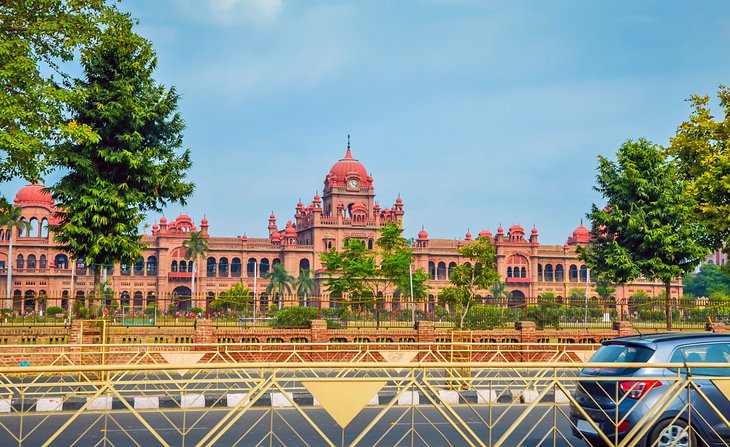
Khalsa College
Architecture buffs, make a point to visit Khalsa College on Grand Trunk Road in Amritsar. The historic educational institution doubles as a premier example of 19th-century Indo-Saracenic architecture, a mash-up of Western European aesthetics with the exuberance of Indian and Persian styles.
With elegant onion domes and scalloped archways, Khalsa College’s palatial main building is impressive and has served as the setting of many Bollywood films. Spend some time wandering the tranquil campus and gardens, but keep in mind that the academic and administrative buildings are reserved exclusively for students and staff—this is still a working university, after all.
Address: Grand Trunk Road, Putligarh, Amritsar
Gobindgarh Fort
More than 250 years old, the Gobindgarh Fort has become one of the most iconic symbols of Punjab. The heritage site hails from a time when the Indian subcontinent was divided into small principalities and ruled by kings. At one point, some 12,000 soldiers manned the fort to protect Amritsar from potential invaders.
In modern days, Gobindgarh Fort has transformed into an educational attraction dedicated to the history and culture of Amritsar. The complex contains four museums, including a Warfare Museum showcasing rare weapons, a Turban Museum explaining headgear from the region, and a Sikh Art Museum. Stick around after dark for the captivating light and sound shows projected on the fort’s Colonial Bungalow.
Address: Old Cantt Road, inside Lohgarh Chowk, Vijay Chowk, Amritsar
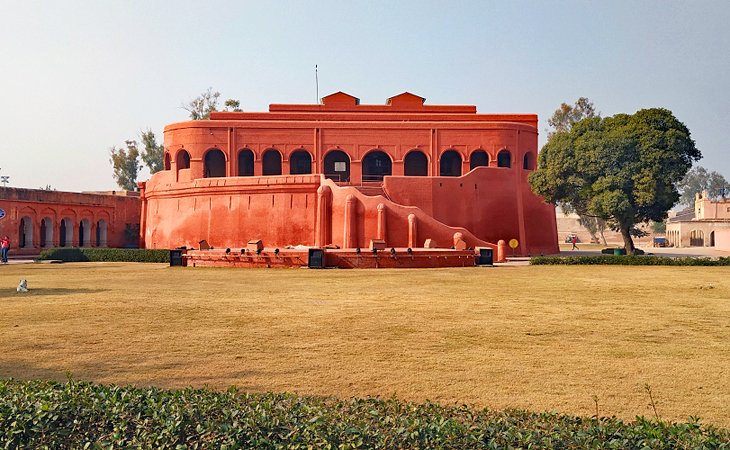
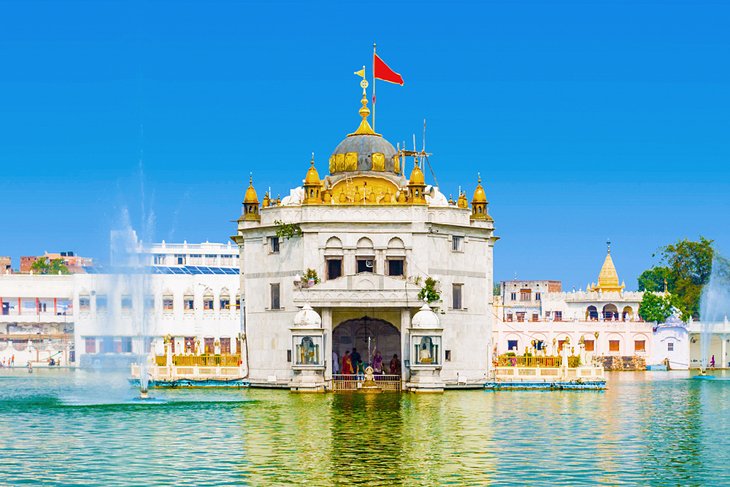
Shri Durgiana Mandir
Take one look at Shri Durgiana Mandir (Durgiana Temple), and you might think you’re seeing double. With its half gold, half marble facade, the domed structure looks almost identical to the Golden Temple—it’s even housed in the center of a sacred lake.
While the two temples may not differ much in looks, they certainly have distinctive purposes. Durgiana Temple is a Hindu religious site, where devotees pay tribute to warrior goddess Durga; wealth goddess Laksmi; and Vishnu, the protector of the universe. The attraction is mostly visited by religious travelers, but even everyday tourists will appreciate the magnificence of the inlaid marble and spiritual atmosphere of the temple.
On your way inside, pay attention to the exquisite silver doors, depicting holy figures. The distinctive feature is responsible for Durgiana Temple’s nickname as the Silver Temple.
Address: Shree Durgiana Tirath, O/S. Hathi Gate, Goal Bagh, Amritsar
